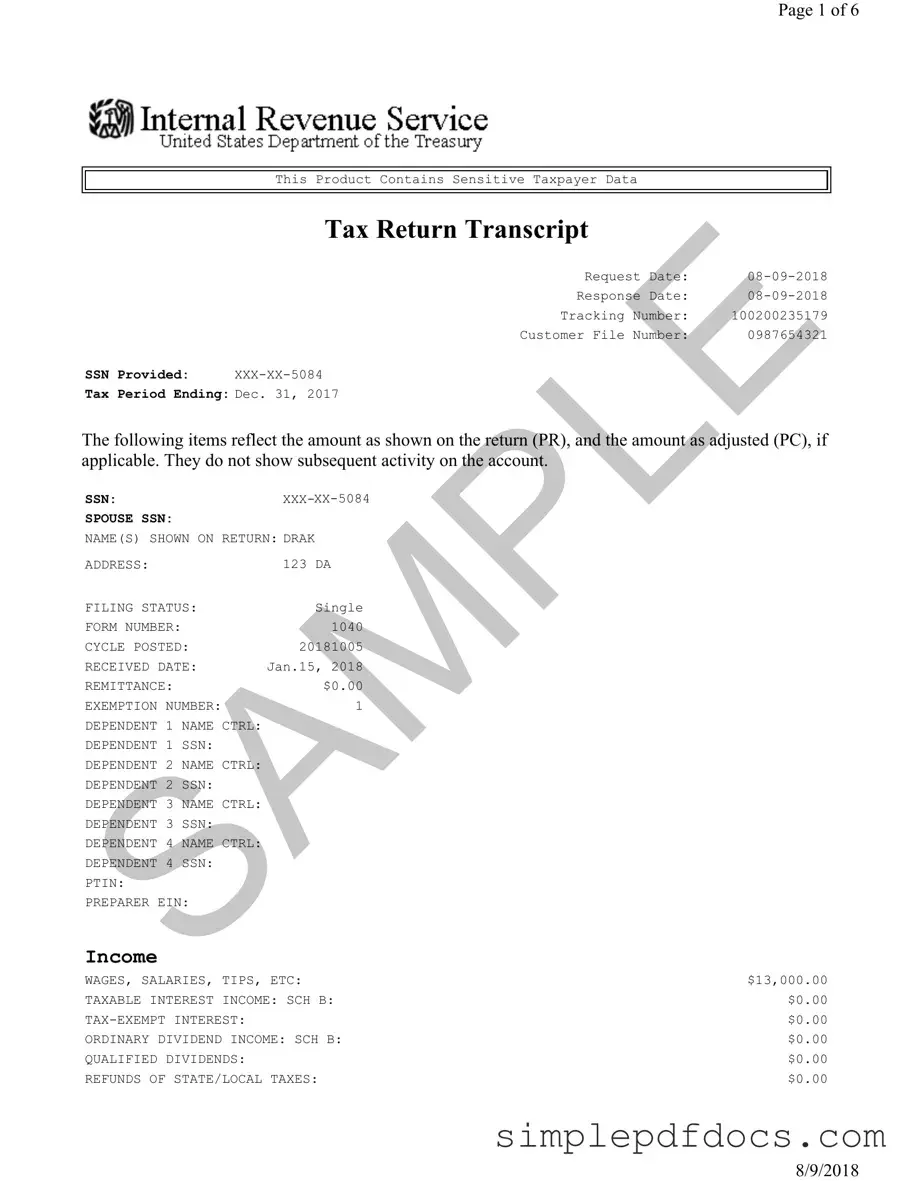The Sample Tax Return Transcript form serves as a crucial document for individuals seeking to understand their tax situation. It provides a detailed summary of the information reported on a taxpayer's federal income tax return, including essential data such as income, deductions, and credits. This form is particularly valuable for those applying for loans, financial aid, or other situations where proof of income is necessary. Key components include the taxpayer's Social Security Number (SSN), filing status, and total income, along with adjustments that may affect the taxable amount. Additionally, it outlines various income sources, such as wages, business income, and potential credits that can reduce tax liability. The transcript does not reflect any subsequent account activity, making it a snapshot of the tax return for a specific year. By understanding the details within this form, taxpayers can gain clarity on their financial standing and ensure they are well-prepared for any financial obligations or opportunities that may arise.
